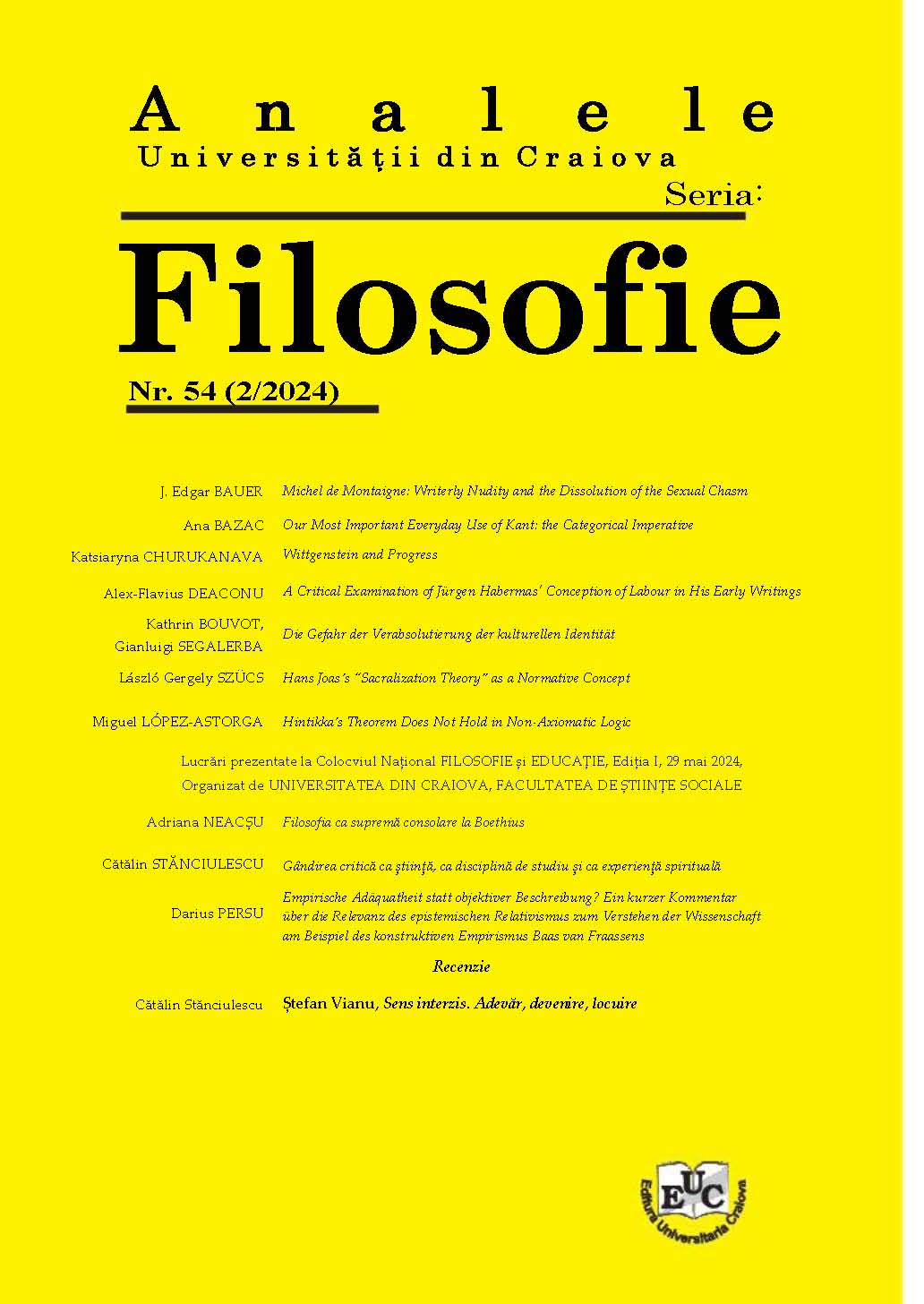DIE GEFAHR DER VERABSOLUTIERUNG DER KULTURELLEN IDENTITÄT
DOI:
https://doi.org/10.52846/afucv.v2i54.88Keywords:
Amartya Sen, Identität, Kultur, Gruppe, Huntington, Krieg, Kommunitarismus, Tradition, Schicksal, Klassifikation, GewaltAbstract
In our study, we analyse aspects of Sen’s criticism of specific interpretations of cultural identity. We shall see that, in Sen’s view, different interpretations of cultural identity can be given. The different ways in which cultural identity is interpreted correspond to different ways of living one’s culture; they are connected to different interpretations of religion and religious identity too. Throughout Sen’s inquiry, we find the following interpretations of cultural identity:
- The first interpretation of cultural identity, which corresponds to Sen’s interpretation of cultural identity, considers cultural identities as the results of many components which constantly evolve (this might be defined as the flexible, dynamic, and inclusive view of identity).
- The second interpretation considers cultural identity as rigid, complete, isolated, and given once and for all (this could be defined as the rigid and static conception of cultural identity). The second conception of identity corresponds to the aim of producing people and groups as isolated systems.
Sen investigates the psychological mechanisms connected to the rigid interpretation of cultural identity. Individuals can be manipulated through the rigid interpretation of cultural identity. Sen shows that cultural identities can be used to marginalise all those individuals who do not belong to those same cultural identities: this kind of cultural identity is constructed in order to divide individuals, groups, peoples, countries, and nations from each other. Cultural identities can be used to create a group which, as such, does not exist at all or is not so homogeneous and uniform as those who plead for this concept of cultural identity think and want other people to think. The group is created artificially by an artificial cultural identity. The rigid cultural identity of certain sectors of people means the exclusion of other sectors of people. This kind of cultural identity is built to bring about enmity and hostility between individuals, groups, nations, countries, and communities: the aim of this cultural identity is to produce hostility in a group towards other groups.
In Sen’s view, cultural identities always result from a plurality of cultural components. Cultural identities take elements from other cultural identities. Therefore, cultural identities are not isolated systems: they are the product of a historical development which involves the participation of different individuals, groups, and cultures. Moreover, cultural identities are not made once and for all: on the contrary, cultural identities are dynamic phenomena which continuously take in new elements.
For our investigation, we refer to Amartya Sen’s study Identity and Violence. The Illusion of Destiny.


